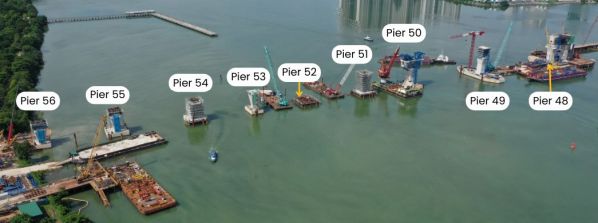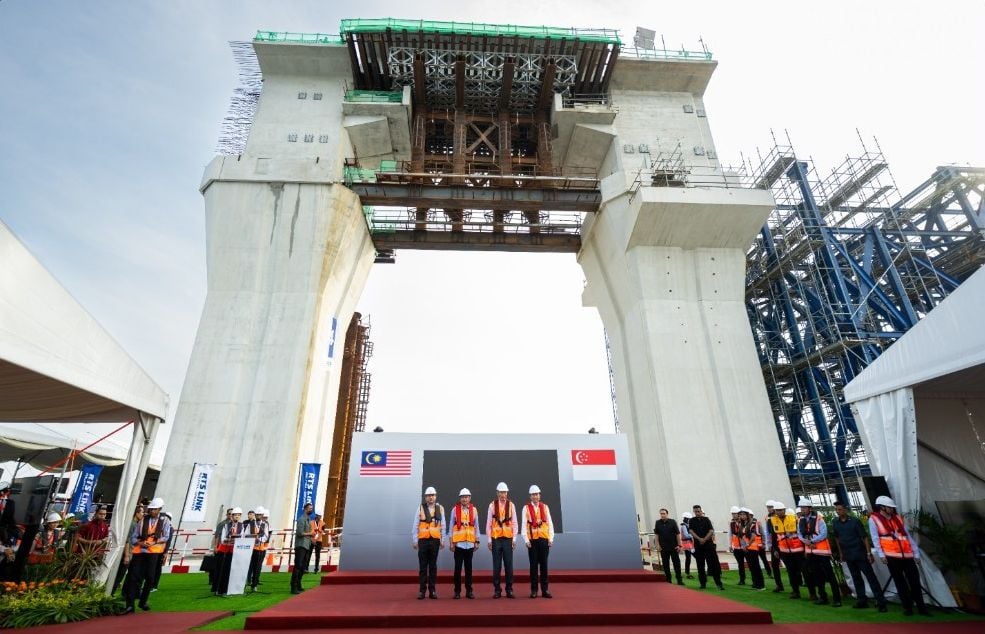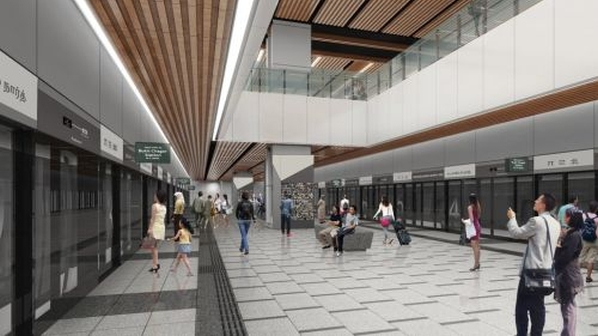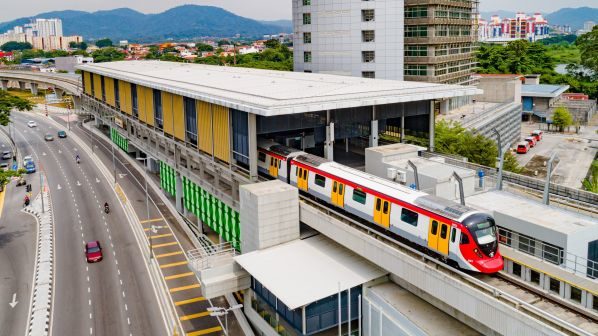THE prime minister of Singapore, Mr Lee Hsien Loong, and the prime minister of Malaysia, Mr Anwar Ibrahim, met at the Strait of Johor on January 11 to mark the completion of the cross-border span of the marine viaduct between Malaysia and Singapore, a key milestone in the Johor Bahru - Singapore Rapid Transit System (RTS) Link project.
The 17.1m-long connecting span is a reinforced concrete structure that spans Malaysia’s Pier 47 and Singapore's Pier 48 at a height of 26m. Work was completed on the 340-tonne structure in December.
During the ceremony at the RTS Link viaduct site both prime ministers signed commemorative plaques symbolising the shared commitment of both countries to deliver the cross-border light metro project.

Construction on the 4km line that will run for 2.7km in Malaysia from Bukit Chagar station in Johor Bahru and 1.3km in Singapore to Woodlands North station commenced in Malaysia in November 2020 and in Singapore in January 2021. Singapore’s Land Transport Authority reports that all 12 pile caps, which form the foundations for the piers supporting the 730m-long RTS Link marine and land viaduct on the Singapore side of the border, have been completed. Construction of the piers as well as the launch of viaduct segments are continuing, LTA says.
The elevated structure will connect with a tunnel to the RTS Link Woodlands North station, which is being constructed at a depth of 28m. The station will interchange with the Woodlands North MRT station on the Thomson-East Coast Line.
The completion of civil engineering work is expected by the end of 2024, and LTA reports that it is now around two-thirds complete, RTS Operations, a joint venture of Prasarana Malaysia Berhad and SMRT Corporation, will commence the installation of rail systems on the line in early 2025. The joint venture was awarded a 30-year concession to design, build, finance and maintain the line.
The RTS Link will have capacity to carry 10,000 passengers per hour per direction on the five-minute journey. It is expected to open for passenger service in 2026.

For detailed data on Asian metro projects, subscribe to IRJ Pro.




